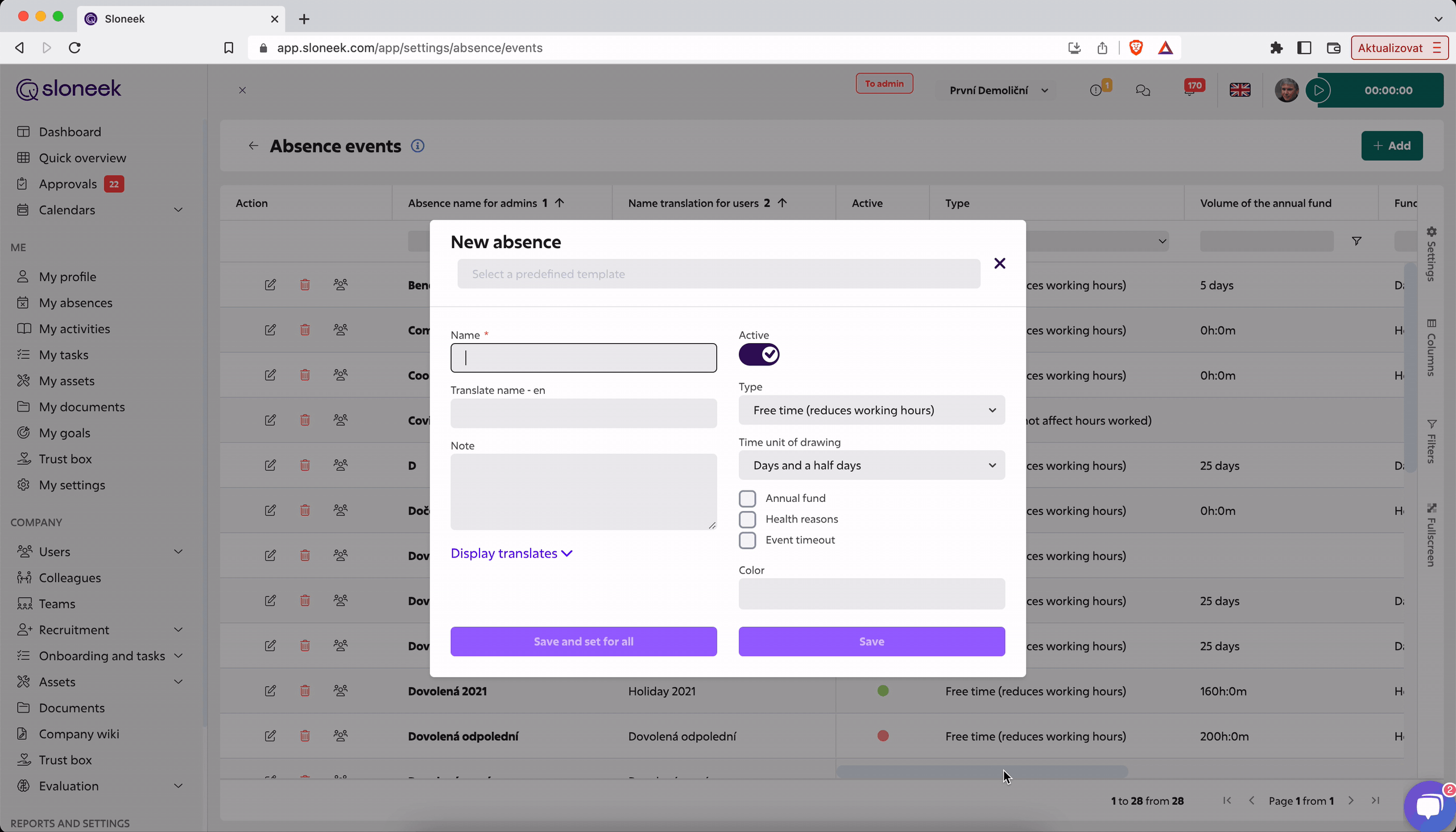Records of overtime work and its reporting including the use of compensatory time off.
We record overtime as the balance (difference) between the set working hours and the timesheet. This can be obtained either by recording time worked in the Activities module or by recording arrivals and departures via the electronic attendance system.
In both cases, the balance can be found in the Arrivals and Departures Report or the Activity Report.
The transfer and compensation of overtime is not automatic in Sloneek. This is because it is independent of the legislation of each country.
Transfer of overtime to exhaustion (compensatory time off)
To take time off, first create a new absence event. You create it as a Free type with an HOURLY annual fund with a unit of use by hours. which you set to "0":

You will assign the event to each user individually or in bulk as they first become eligible to take compensatory time off.
Because you most likely want the compensatory time off to be taken in the year in which it is earned, you will incrementally increase the fund in the Fund for this year column as the eligibility to take it is earned over time.
Example
On January 1 an employee is entitled to 5 hours of compensatory time off.
In the absence event assigned to a specific user, you enter 5 in the Fund for the first year field.
On February the employee has an additional entitlement to 3 hours compensatory time off.
You increase the value in the Fund for this year column by 3 to 8. You increase the balance gradually, which also records for reporting purposes the number of hours of compensatory time off that the user had in a particular year.
Basis for payment of overtime hours
If you have decided to pay overtime, just create one of the reports above. The key is the balance value, which determines the amount of overtime compared to the set working hours.